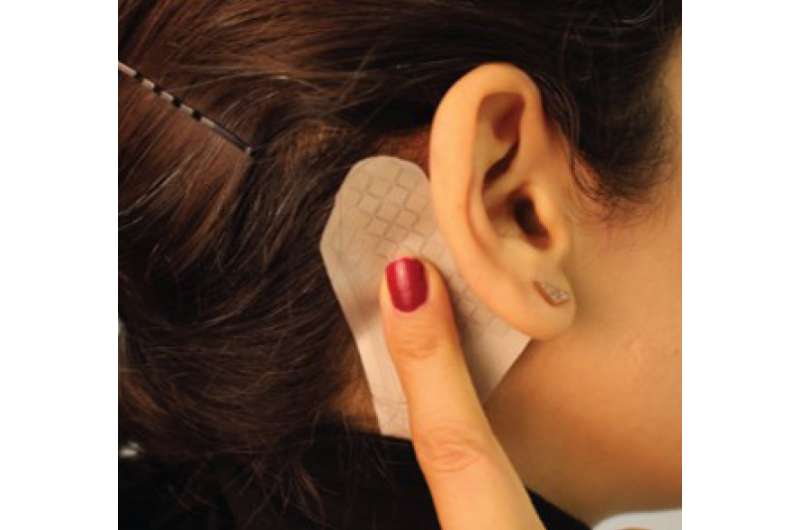Saarbruecken computer scientists have developed novel skin sensors that allow mobile devices to be controlled from any point on the body. Credit: Saarland University
Sensors now make it possible to capture touches on the body very precisely, even from multiple fingers. Researchers have successfully tested a new prototype sensor in four different applications.
"The human body offers a large surface that is easy to access, even without eye contact," said Jürgen Steimle, a professor of computer science at Saarland University, explaining the researchers' interest in this literal human-computer interface. The development was challenging because the such sensors could not measure touches precisely enough, nor could they capture them from multiple fingertips simultaneously.
The prototype sensor, named Multi-Touch Skin, looks similar in structure to the touch displays that are well known from smartphones. Two stacked electrode layers, each arrayed in rows and columns, form a kind of coordinate system, at whose intersections electrical capacitance is constantly measured. Capacitance is reduced at the point where fingers touch the sensor, because the fingers conduct electricity and therefore allow the charge to drain away. These changes are captured at each point, and thus touches from multiple fingers can be detected. In order to find the optimal balance between conductivity, mechanical robustness and flexibility, the researchers evaluated different materials. Silver was chosen as the conductor, PVC plastic for the insulating material between the electrodes, and PET plastic for the substrate; the sensor could be printed using a household inkjet printer in less than a minute.
"So that we could really use the sensors on all parts of the body, we had to free them from their rectangular shape. That was an important aspect," explains Aditya Shekhar Nittala, who is doing his doctoral research in Jürgen Steimle's group. The scientists therefore developed software for designers to create their own desired sensor shapes. In the program, the designer first draws the outer shape of the sensor, then outlines the area within this outer shape that is to be touch-sensitive. A special algorithm then calculates the layout that will optimally cover this defined area with touch-sensitive electrodes. Finally, the sensor is printed.
The usefulness of this new freedom of form is demonstrated in one of the four test prototypes, each of which the scientists produced with their novel fabrication method. It was designed to fit a test participant's right ear. The subject could swipe upward or downward in order to use it as a volume control. Swiping right or left changes the song being played, while touching with a flat finger stops the song.
For the Saarbrücken scientists, Multi-Touch Skin is further proof that research into on-skin interfaces is worthwhile. In the future, they want to focus on providing even more advanced sensor design programs, and to develop sensors that capture multiple sensory modalities.
Provided by Saarland University
























